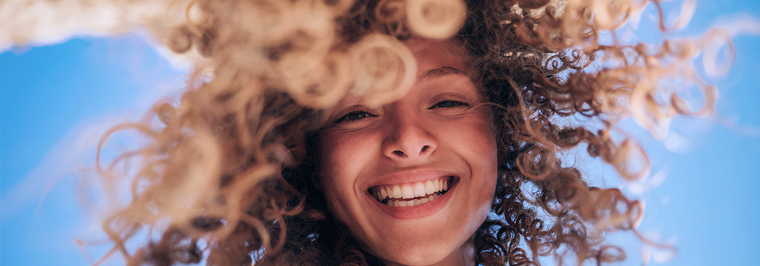The most common reason for visiting dentists in patients of all ages is caries. Without treatment, it leads not only to the complete destruction of the tooth and the defeat of neighboring, healthy elements, but also to severe complications affecting not only the dentoalveolar system.
General information about caries

Caries is an active process of destruction of dental tissues, initiated by pathogenic microorganisms living in the oral cavity. During the vital activity of bacteria, organic acids are formed, literally corroding tooth enamel. And when the integrity of the enamel layer is broken, the destruction will pass into the dentin and a carious cavity will form, which looks like a dark hole. The dark layer in the cavity is dead and decaying dentin, in which bacteria continue to actively develop.
And in order to cure caries and restore the tooth, it is necessary to completely remove all tissues affected by caries. For this purpose, the very tool that both adults and small patients are so afraid of is a drill. Working with its tip, the doctor removes the destroyed dentin and forms a cavity for the installation of a filling.
This is a fairly general description of the caries treatment process, a specific method is selected after examination, determining the development phase and other features of the clinical picture.

Spot stage
The primary stage, which is reversible with timely detection. It is manifested by the appearance of whitish or yellowish rough spots on the enamel coating of the tooth, loss of luster inherent in healthy teeth. If such caries is detected during a diagnostic examination, then for its treatment it will not be necessary to use a drill and carry out filling. It is enough to undergo a course of remineralization.
Remineralization involves the saturation of tooth enamel with minerals that can restore its structure.
These minerals are included in the composition of gels and varnishes, which are applied to the surface of teeth diagnosed with caries in the stain stage during the course of treatment.
After therapy, the enamel is restored, whitish spots disappear. It is clear that this method of treatment is not capable of causing any discomfort to the patient, and therefore does not require the use of anesthesia. But in order to detect caries in this phase of development, you should regularly undergo medical examinations in the dentist's office.

Surface stage
It is characterized by the destruction of the enamel layer and the beginning of the formation of a carious defect, which does not yet affect the dentin. Visually, the stage is given out by already noticeably darkened, light brown spots on the tooth enamel. Superficial caries can be treated without drilling the tooth, using ICON technology, but the traditional scheme with drilling and subsequent filling is more often used.
Middle phase
The destructive process goes deep and affects the upper layers of dentin. Dentin does not have the same hardness as tooth enamel, therefore, from this phase, caries will begin to develop rapidly and a deep carious cavity will form quite quickly. We will analyze the process of treating the middle stage of caries in detail in the article, because it is with this form that patients most often seek dental care.

Deep caries
It is clearly visible visually, since the tooth at this stage of caries is usually almost completely destroyed. The pathogenic process goes deep into the dentin and extends almost to the pulp. If you continue to delay the treatment of caries, it is highly likely that you will have to carry out pulpitis therapy, which involves performing a number of complex manipulations.
Medium caries: a detailed description of all stages of treatment

Before proceeding to a description of all the stages of caries treatment, let us remind you: the sooner you see a doctor, the easier it will be to cure a problem tooth and preserve as much healthy tissue as possible. There is no need to be afraid of pain or discomfort. In modern dentistry, anesthetics are used that completely block discomfort.
In order to cure caries qualitatively and avoid its secondary development under a filling, the sequence of stages must be clearly observed during therapy.
In addition, it is important to remove all tissues affected by caries, since even microparticles of damaged dentin will act as a focus of infection that easily passes into the depths of the tooth, to the pulp (tooth nerve).

Diagnostics
The very first and one of the most important stages in the treatment of caries. It will allow you to establish the stage of development, to see how deep the pathogenic process has gone into the dental tissues. Diagnostics involves not only a visual inspection, but also the performance of sighting pictures. To identify all carious lesions, special indicator preparations are used that clearly show areas with impaired enamel integrity.

Sanation
It involves cleaning the teeth, supragingival and subgingival space from soft and hard deposits. The plaque remaining in the oral cavity will be the focus of infection and the environment for the active reproduction of carious bacteria, so you definitely need to get rid of it. In addition, professional cleaning will help the doctor to see the color of natural enamel and accurately select the shade of the composite for the restoration of the anatomical shape and aesthetics of the tooth. The accuracy of color matching is especially important when restoring dental elements that are part of the smile area.

Anesthesia
If medium, deep caries is being treated and the tooth is alive (that is, with a preserved nerve), then high-efficiency local anesthetics are used before starting manipulations. The drugs are injected into the tissues and completely block pain impulses for several hours. This time is enough for the doctor to complete all the stages of work on the treatment and restoration of the problem tooth. Therefore, all the stories that it is terribly painful to treat caries are myths in our days that you do not need to believe, and even more so, to postpone dental treatment because of them.
Our dentistry is open and working for you in Dubai on Bluewaters Island Resident part, Building 10.

Removal of affected tissue
It is performed with a drill, the tips of which the doctor changes depending on the type of manipulations performed. To open the tooth, a handpiece equipped with diamond burs is used, operating at high speeds. To remove destroyed internal tissues, a less high-speed mechanical nozzle is used.
When carrying out this stage of caries treatment, it is extremely important to remove absolutely all damaged tissues.
If even microscopic particles of destroyed dentin are left, then secondary caries will begin under the installed filling, or, even worse: the infection will penetrate into the pulp or to the roots of the tooth. Then the risks of pulpitis and periodontitis increase, complications that can lead to tooth loss.
Working with dental tissues, the dentist will create a clean cavity for the installation of a filling, which will restore all the functions, anatomy and aesthetics of the tooth.

Moisture isolation
Having prepared the cavity for the filling, the dentist must definitely isolate the treatment area from moisture. Saliva, moisture from the breath will make the restoration fragile and significantly reduce its useful life. Previously, cotton swabs were used for these purposes, and it is clear that they did not create high-quality moisture insulation.
Today, for moisture protection, a special latex cloth is used - cofferdam. It is stretched over the teeth and secured with clasps and a frame. The use of a rubber dam helps to reliably protect the treatment area from moisture and put a strong and durable filling.

Treatment with antiseptics
The prepared cavity is treated with antiseptic preparations that destroy pathogenic microflora.

Restoration of contact surfaces
Manipulation is performed for teeth on which caries has appeared on the interdental surfaces. This is a rather complicated and time-consuming work, because it requires the use of special devices (matrices, wedges).

Acid treatment
Etching of dental tissues with acidic solutions is necessary to improve the penetration depth of the adhesive preparation. The tooth is covered with a gel containing phosphoric acid. After a certain exposure time, the gel is washed off, and the tooth is dried with a directed air flow.

Application of the adhesive
The adhesive improves the quality of fixation of the seal. They process the enamel and dentin of the restored tooth. The drug is allowed to soak and then illuminated with a UV lamp.

Gasket installation
To ensure that the restoration does not shrink and stay firmly in place, the dentist will install a special insulating gasket before filling the bottom of the formed cavity.
The final step in the treatment of medium caries will be filling, carried out using photopolymer composite materials. The composite is applied in layers, each layer is illuminated with a lamp for strength. The task of filling is to restore the shape, all anatomical features and functions of the tooth, to restore its aesthetic appearance. The finished restoration is ground and polished. Without these manipulations, the filling will be rough and lack the luster inherent in natural tooth enamel.
Deep caries

If caries is started before this stage of development, then it is clearly visible visually. A deep carious cavity is formed on the tooth, often only one wall remains from it. Destruction goes deep into the internal tissues and reaches almost to the pulp, which is colloquially called the dental nerve. Therefore, when diagnosing, it is imperative to make sure that the pulp is healthy and not affected by the infectious and inflammatory process. If the study shows damage to the pulp, then it is no longer caries that is being treated, but pulpitis and therapy will include the removal of the dental nerve and work with the channels.
It is more correct to treat deep caries in two visits to finally make sure that the infection has not penetrated into the pulp.
On the first visit to the dentist's office, all tissues destroyed by the carious process are removed, antiseptic and antibacterial preparations are placed in the cavity, and it is closed with a temporary filling. The patient is sent home. If in 1-3 days the tooth does not start to hurt, then the pulp has remained healthy and permanent filling can be carried out.
Cervical caries

This form of caries affects the neck of the tooth, the area in which the crown passes into the root. The enamel of the neck is very thin, so carious processes develop extremely quickly and a deep carious cavity can be hidden under a tiny hole. Cervical caries appears in most cases due to poor hygiene. If the plaque in this area is not removed, the bacteria will first destroy the enamel, and then the inflammatory-infectious process will move into the dentin.
The tactics of treatment is chosen based on the stage of development of the carious process. If the disease is detected in the stain stage, the therapy is carried out without drilling the tooth, all other stages will require the use of a drill and filling.
We would like to draw your attention to another feature of cervical caries, which is its ability to quickly spread to neighboring teeth. If this form is not treated in a timely manner, then it is highly likely that in the future it will be necessary to carry out multiple caries therapy.
What other methods of caries treatment are there?
Therapeutic dentistry is constantly evolving, so new methods of treating caries regularly appear in it. Consider several technologies that have appeared relatively recently.
ICON
A non-invasive treatment technique that eliminates the need for drilling the tooth. It involves the use of a specialized set of tools and preparations and the treatment of a problem tooth with a polymer solution that hardens under the influence of UV radiation. The polymer preparation seals the formed carious cavity, destroys the pathogenic microflora and starts the processes of restoring the structure of the tooth enamel.
There are certain indications for the use of ICON technology. It is used only for the superficial form of caries. If the dentin is deeply affected, classical treatment regimens are used.
Experts recognize the advantages of the method:
- high efficiency;
- the ability to preserve tooth tissue to the maximum extent and strengthen tooth enamel;
- absolute painlessness of the treatment process;
- speed of manipulation. Caries treatment using ICON technology will take only 30-40 minutes.
However, this technique is not offered to patients in all clinics, and in addition, if the degree of destruction of the dentin is assessed incorrectly, the risk of developing secondary caries is high.
Ozone therapy
Another non-contact method of treating caries, which involves the disinfection of a problem tooth with ozone molecules. The technology requires the use of special equipment, with the help of which ozone is applied to the tooth, which destroys all pathogenic microflora in just a few seconds.
The technology allows you not to use a drill and not to drill tissue, but it is used only with a superficial form.

Enzyme gels
The technique is used mainly in pediatric dentistry. Its essence lies in applying special gel preparations to tissues destroyed by caries. The active gel destroys the affected dentin, which is removed from the tooth cavity with a special tool. After this manipulation, the tooth is sealed.

Treatment of caries with a laser
Another advanced technology to avoid drilling the tooth. Enamel and dentin affected by the carious process are removed using directed laser radiation. This procedure will be absolutely painless and therefore can be carried out even without anesthesia. Laser treatment can be an excellent solution for people who are afraid of a dental drill and are allergic to anesthetics.
However, the technology also has a number of disadvantages that should be taken into account by patients planning laser caries treatment.
Firstly, in most cases, you still have to use a drill, because the laser perfectly removes enamel damaged by caries, but it does not cope with soft dentin so well. Secondly, the radiation overheats the dental tissues to a certain extent and this leads to a deterioration in the adhesion between them and the filling. It is also important that not all clinics work with the new technology, due to its high cost.
In addition, when treating a tooth with a laser, the dentist puts on dark glasses that impair vision. Accordingly, the risk of inaccurate tissue processing increases, which will lead to the recurrence of caries under the already placed restoration.

Treatment of caries under the microscope
Caries therapy using a dental microscope is one of the services offered by AestheticA clinics to patients. A powerful optical device gives a thirty-fold increase in the treatment area. The doctor, working with a microscope, will see all the features of the structure of the tooth, the treated area, and therefore the risk of errors and poor-quality processing is reduced to zero. In addition, a multiple increase will allow you to save a maximum of living and healthy tooth tissues.
The microscope helps not only in treatment, but also in diagnosis. Under magnification, the dentist will see all the carious manifestations that are invisible during a normal examination, and accurately assess the degree of tooth damage.
And, of course, the microscope is indispensable in the treatment of complications of caries, which involves working with the canals of the tooth.
Caries of the anterior teeth: what is its danger and how is it treated?

Caries, which appeared on the front teeth, not only spoils the aesthetics of a smile.
It has its own characteristics, which are taken into account during the treatment:
- the enamel of the elements of the frontal group is much thinner than on chewing teeth, so caries develops rapidly;
- the carious cavity will develop not in width, but in depth, so the longer treatment is delayed, the higher the risk of pulpitis;
- when restoring, it is necessary to achieve impeccable aesthetics, and this requirement complicates the process of therapy.
For filling the teeth of the frontal group, special composites are used, which allow not only to recreate the anatomical shape and function, but also to give the restoration the most natural and attractive appearance. If the front tooth is destroyed by more than 40% percent, you will have to resort to orthopedic restoration methods, that is, use tabs or crowns. Large fillings are not only not durable, but will quickly lose their visual appeal, darkening from pigments from food and drinks. Ceramic inlays and crowns do not have these shortcomings.

Treatment of caries of chewing teeth
The method is selected from the stage of development of the disease. For restoration, composites of increased strength are used, since a high load is constantly placed on the teeth of the chewing group.
Dentist-therapist answers questions about the treatment of caries
How to detect caries in time?
First of all, you need to provide your teeth with high-quality hygiene and conduct a visual examination after the procedures. If you see that the enamel on any tooth has faded, whitish spots have appeared, this is already a reason to contact the dentist. It is also worth visiting the doctor's office if there is an unpleasant reaction to cold / hot, sour / sweet. But the best recommendation that can be given for the timely detection of caries is to conduct regular preventive examinations. Equipment and modern diagnostic methods help to detect caries at the earliest stages of its development.
I'm afraid of an injection before caries treatment, what should I do?
Mild soreness with the introduction of an anesthetic drug can indeed be present. But it is not as strong as it is presented in the stories of patients with dental phobia. In addition, the injection takes only a few seconds and after its execution there is no longer any discomfort.
Why did the filling fall out immediately after the treatment of caries?
Because the treatment was carried out poorly, with medical errors. You can correct the situation, it is enough to contact a good clinic, in which they treat patients responsibly and give a guarantee for the services provided. It is this approach that is practiced in dentistry AESTHETE, for the treatment of caries, you can choose our clinic in Dubai on Bluewaters Island Resident part, Building 10.
Only one wall remained from the tooth. What will put a seal or crown?
With a significant destruction of dental tissues, the choice is always made in favor of orthopedic techniques that allow achieving a durable result. But before an inlay or crown is placed on the problematic tooth, it is still necessary to treat caries by removing all the destroyed tissues.
How to make sure that caries does not appear again?
First of all, you should ensure high-quality hygiene, which includes both home and professional teeth cleaning. It is also useful to change the diet, reducing the amount of sugar-containing foods in it. Enter into your menu food rich in minerals that are useful for teeth. If you have a malocclusion, you need to correct it, because dentoalveolar anomalies make hygiene difficult and increase the risk of caries.
Referense
- European Society of Endodontology (Ese), Duncan H. F., Galler K. M., et al. European Society of Endodontology position statement: management of deep caries and the exposed pulp. International Endodontic Journal . 2019;52:923–934. doi: 10.1111/iej.13080.
- Kidd E., Fejerskov O., Nyvad B. Infected dentine revisited. Dental Update . 2015;42(9):802–809.
- Pitts NB, Twetman S, Fisher J, Marsh PD. Understanding dental caries as a non-communicable disease. Br Dent J. 2021 Dec;231(12):749-753.















